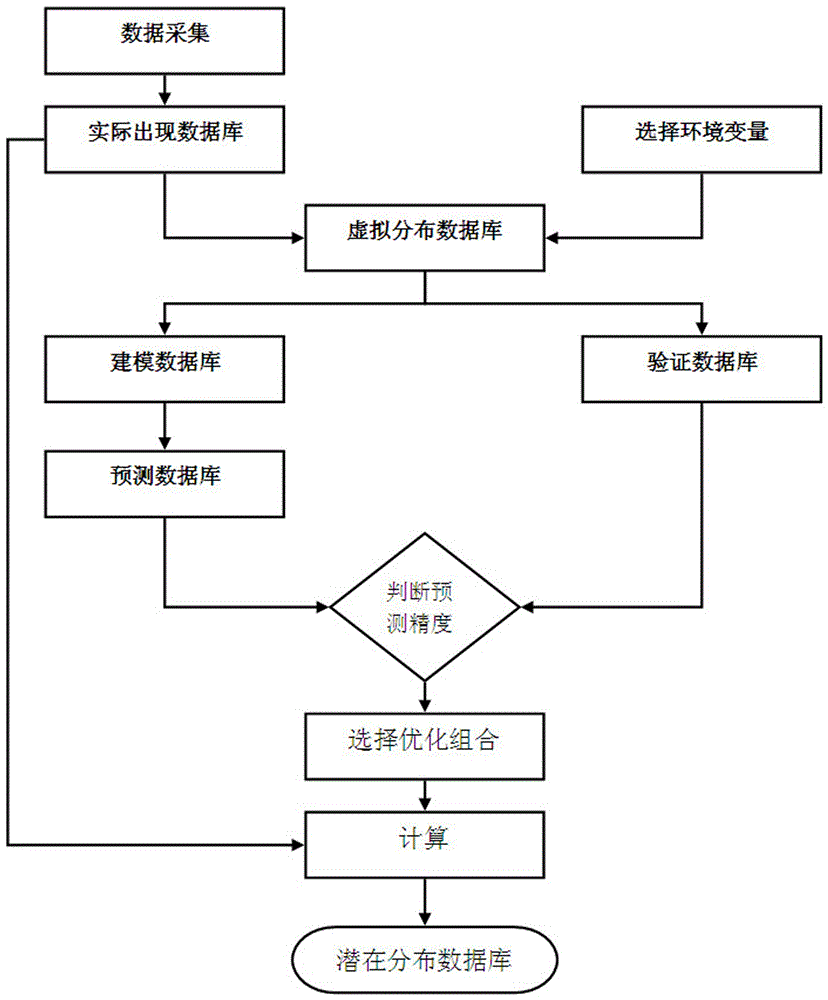Method for simulating potential distribution of endangered pinaceae plants
An endangered pine and plant technology, applied in special data processing applications, instruments, electrical and digital data processing, etc., can solve the problems of large differences in algorithms and simulation processes, low sampling representativeness, and low data representativeness. Sampling and simulation methods, improving forecasting effect, effect of high forecasting accuracy
- Summary
- Abstract
- Description
- Claims
- Application Information
AI Technical Summary
Problems solved by technology
Method used
Image
Examples
Embodiment Construction
[0022] The specific embodiments of the present invention will be further described below in conjunction with the accompanying drawings.
[0023] Such as figure 1 It can be seen that in this embodiment, a systematic field survey was conducted on the endangered Pinaceae plant—Pine pine from Dabie Mountains, and the potential distribution area was simulated in combination with the survey data. It includes the following steps:
[0024] Step 1: Build the actual occurrence database;
[0025] By analyzing the satellite images of the distribution area, the main distribution area of the endangered Pinaceae plants is obtained; through field surveys, the specific distribution points are obtained, and after the data collection is completed, the actual occurrence database of the endangered Pinaceae plants is constructed. The database records the longitude, latitude and altitude of the distribution point, and records the distribution status of the distribution point. The distribution st...
PUM
 Login to View More
Login to View More Abstract
Description
Claims
Application Information
 Login to View More
Login to View More - R&D
- Intellectual Property
- Life Sciences
- Materials
- Tech Scout
- Unparalleled Data Quality
- Higher Quality Content
- 60% Fewer Hallucinations
Browse by: Latest US Patents, China's latest patents, Technical Efficacy Thesaurus, Application Domain, Technology Topic, Popular Technical Reports.
© 2025 PatSnap. All rights reserved.Legal|Privacy policy|Modern Slavery Act Transparency Statement|Sitemap|About US| Contact US: help@patsnap.com


